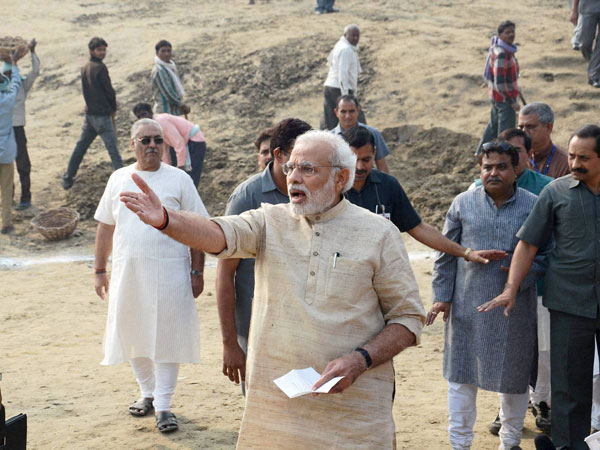During the past 5 years, Narendra Modi led NDA government has launched number of schemes for the welfare of every section of people in the country. Of them, Rural Sanitation coverage under Swachh Bharat Mission, Mission Indradhanush and National Nutrition Mission are rightly considered as most successful schemes.
Rural Sanitation
For the first time in India, sanitation and cleanliness is being implemented by Government of India as a strategic programme. Rural sanitation under Swachh Bharat Mission is successful with active participation of people of India. It is interesting to note that rural India is a major stakeholder in the success of rural sanitation program.
In a span of 5 years, the government has achieved such a status of coverage that 99% of the country has access to toilets. This figure was a mere 38% during the previous government led by UPA which shows how the Congress government had neglected rural areas from basic amenities. Since the launch of mission on 2nd October 2014, 9.25 crore rural household toilets were built by the Modi government and 5.56 lakh villages are declared as Open Defecation Free(ODF) villages.
With improved sanitation by way of access to household toilets, Swacch Bharat Mission has helped in averting 1.8 lakh deaths due to diarrhea in 2018, as per WHO study. It is also estimated that around 3 lakh lives can be saved with proper sanitation coverage if the target of 100 percent household coverage is achieved by October 2019. WHO also praised India for the “accelerated coverage of safe sanitation services.” It is noteworthy that before 2014, 199 million cases of diarrhea cases were caused due to lack of proper sanitation facility.
Difference in approach and implementation joined with people participation are the factors that made the results fruitful compared to the results during previous government.
Also Read: The Eat Right India Movement: Everything you need to know
Mission Indradhanush
Mission Indradhanush was launched by the Ministry of Health and Family Welfare, Government of India on December 25, 2014 with an objective to provide life-saving vaccination to all Children to protect them from Tuberculosis, Diphtheria, Pertussis, Tetanus, Polio, Hepatitis B, Pneumonia and Meningitis due to Haemophilus Influenzae type b (Hib), Measles, Rubella, Japanese Encephalitis (JE) and Rotavirus diarrhoea.
During the period 2009-2013, immunization coverage was increased from 61%-65% showing a mere 1% increase every year. In order to increase the immunization coverage to 5% every year, Mission Indradhanush has adopted a target to achieve full immunization coverage by 2020 and the progress achieved till now indicates that the target is well within the reach.
Phase I of this scheme was implemented from 7th April 2015 in 201 districts with high focus for four consecutive months. More than 75 lakh children were vaccinated during this phase out of which 20 lakh children were fully vaccinated and tetanus toxoid vaccine was given to 20 lakh pregnant women.
Phase II covered 352 districts (279 are of medium focus and 73 are of high focus which were part of Phase I) and four special drives of weeklong duration were conducted. Phase I and II of the special drive covered 1.48 crore children and 38 lakh pregnant women additionally immunized.
Phase II was launched on 7th April 2016 and covered 216 districts and Phase IV was launched from 7th February 2017 in the States of North East. With this, 2.53 crore children and 68 lakh pregnant women were covered and provided life-saving vaccination.
By implementing the scheme countrywide, the results began showing as the annual immunization coverage growth was recorded at 6.7%. Also, Mission Indradhanush has been selected as one of 12 best practices globally and featured in Special Issue of British Medical Journal.
National Nutrition Mission (POSHAN Abhiyaan)
POSHAN Abhiyaan was launched by Ministry of Women and Child Development, Government of India with a budget outlay of 9046.17 crores to achieve improvement in nutritional status of children from 0-6 years, adolescent girls, pregnant women, and lactating mothers during the next three years from 2017-18. It also targets reduction in anaemia among children, women and adolescent girls and reduce low birth weight.
This scheme is being implemented in phases over a period of 3 years to benefit more than 10 crore people. In 2017-18, 315 districts and in 2018-19, 235 districts are covered. The balance districts are being covered in 2019-20.
With the efforts of the government, malnutrition in children has seen improvement in the last two years and the results are visible today. The malnutrition in children has reduced by 2% each year and is down by 4% in two years since the implementation of National Nutrition Mission.
